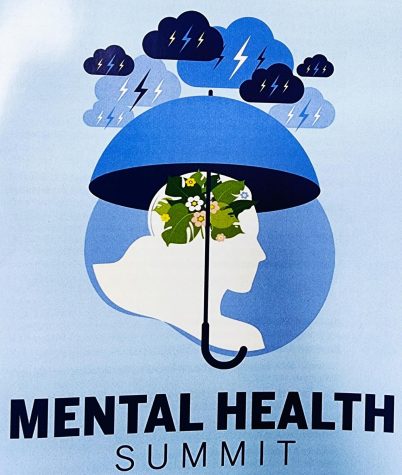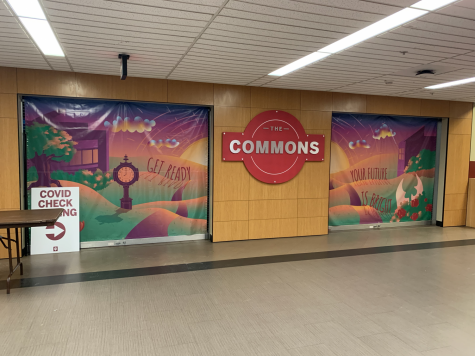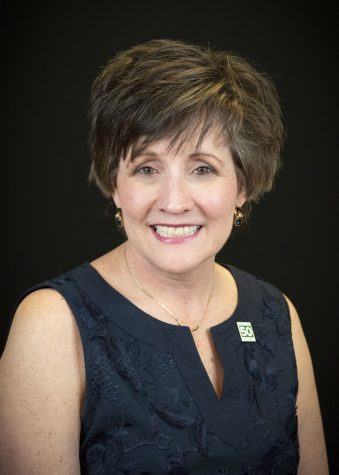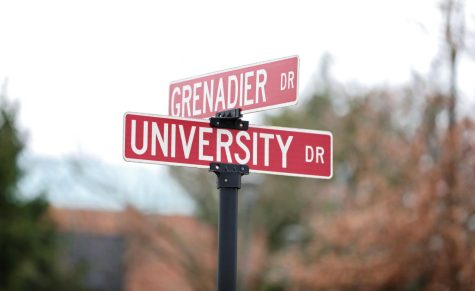First winter session draws students between semesters
January 19, 2017
While many students spent the holidays at home celebrating with loved ones, more than 200 other students were attending classes at IU Southeast during the winter session.
In the first endeavor of its kind, classes were offered over the holiday season to those who wished to accelerate their graduation. Fall semester usually ends shortly after Thanksgiving and spring semester starts in early January.
Between fall and spring, there is a four-week gap that IU Southeast decided to fill this year with a winter session.
The winter session packed in a full class semester in less than a month’s time. The classes began on December 15, with final exams on Jan. 7 – just two days before the start of spring semester. With an entire semester of classes packed into just over three weeks, it was a very quick, but very busy, time for the students that braved this new venture.
Lewis Griffin, science and informatics junior, was one of the students who decided to attend the winter session.
For Griffin, the class was timely and needed for his graduation track, as well as within his schedule.
“In my situation, there was one class that wasn’t being offered during the regular school year which I needed to take,” he said. “I am a non-traditional student, so time only afforded me to be able to only take one class during the winter session. The class that I took was a hybrid class, meaning we met in a face-to-face setting once a week and met in a virtual classroom on twice a week.”
However, Griffin also stressed that by no means did this mean that a shorter class meant high marks were guaranteed.
“The particular class I took was I-427, search and informatics,” Griffin said. “Since this was a 400-level course with programming involved, the workload was quite intense. When you break it down, we covered six normal – or average – class periods every week. That’s two normal class periods for each of the three days during the winter session.”
In addition to the denser classes, scheduling was also a challenge, as Griffin worked full-time on top of taking the class over the winter session.
“It was difficult. I made arrangements with my employer to be able to attend this winter session course. As soon as I left work, I headed straight to the class,” he said. “Even though two days were in a virtual setting, several of us still met on campus.”
Griffin attended classes three hours a day on Tuesdays, Wednesdays and Thursdays. After classes were over, and even on days when the class did not meet, Griffin could be found on campus working on projects with classmates.
Many students braved the possible scheduling conflicts and intense workloads to attend classes over the winter to shorten their time in college. According to the Office of Institutional Effectiveness at IU Southeast, total of 205 students enrolled in the winter session, totaling 562 credit hours. Initially, 29 courses were offered, but that number went down to 22.
Of those 22 courses, all but two were undergraduate-level classes, the majority of those being 100-level courses.
Five of those were 400-level courses, while there were four of the 200-level and 300-level offered over winter.
The remaining two were graduate-level classes.
Those enrolled were predominantly in undergraduate classes.
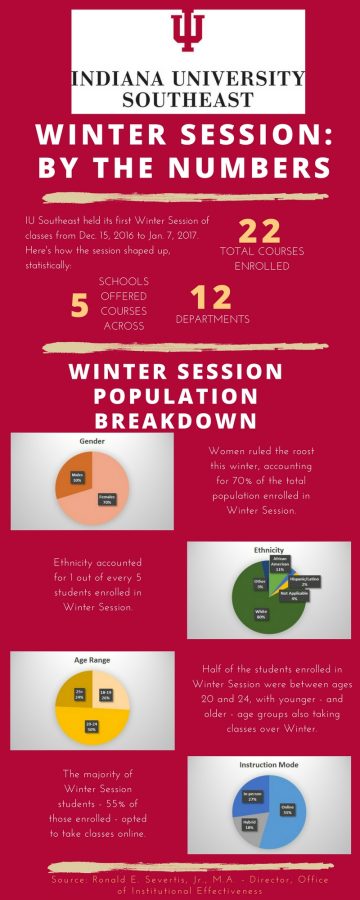
193 students, or 94 percent, were in undergraduate-level courses that made up the majority of what was offered. Three Graduate students enrolled in the session.
In addition, five Undergraduate Special – visiting and non-degree students – and four Graduate Special students enrolled, comprising those taking classes for a license.
Social Sciences made up the highest number of those with 65 students in that program enrolled in the winter session. Behind the Social Sciences program were the Natural Science program (with 33 students enrolled) and Business (with 31 enrolled).
Education followed those with 24 students, then Nursing (with 18 students) and Arts & Letters (16 students). General Studies and ACES (undecided) rounded out the winter session enrollment.
The shorter time frame of the winter session also had an effect on the school deadlines for semesters.
According to the academic calendar for spring 2017, the current semester at IU Southeast started on Jan. 9. Students had until Jan. 15 to register or drop/add classes for the semester, giving them a total of six days.
However, according to the academic calendar for winter session, the session began on Dec. 15 with the deadline to drop/add classes three days later on Dec. 18. In comparison, students had just half the usual time to adjust their class schedules for winter session.
In contrast, students had 13 days to drop courses during the winter session before receiving an automatic withdraw, with a deadline to do so by Dec. 28. The deadline to do this for spring semester was Jan. 16, giving students only 10 days during the current semester.
Christopher Kimmer, search and informatics professor for the winter session, also raced to prepare for the shorter semester.
“There was an announcement early in the fall semester, but I didn’t plan to teach a winter session course at all,” he said. “By about the middle of [the fall semester] it became apparent that a few students needed my course to graduate and weren’t able to take the alternate courses available. I was going on sabbatical in the spring, [but] I agreed rather late to teach the class over the holiday break to help a few students out.”
Kimmer said there were obstacles as well as benefits of a shorter course.
“On the whole, it’s more difficult with the shorter semester because there’s so little time to practice concepts and then improve on them,” he said. “On the other hand, there’s less time to forget things and no time to waste, so it’s very efficient.”
The class was an intensive programming class, which was difficult for many students. The condensed period added to the difficulty, but the students attended every class and did the work.
The winter session had its hurdles, such as a tighter timetable, heavier course work and unusual timing of university deadlines.
Despite these factors, Griffin feels the winter session was an overall benefit.
“I do feel [the winter session] was a success and would like for more classes to be offered for a winter session,” he said. “Taking this course during the winter session has moved up my graduation date by a full semester.”
Dr. Kimmer also weighed in on the final outcome of the winter session.
“Overall it was a success. However, it’s better for some classes than others. Since I taught my class on an ’emergency’ basis, I don’t ever plan to teach it again over 3 weeks,” Kimmer said. “I prefer the longer version. Likewise, some students prefer to stay busy and some students prefer and deserve a winter break. The three-week winter session seems like a good option for the students and faculty who want to work through the break.”







